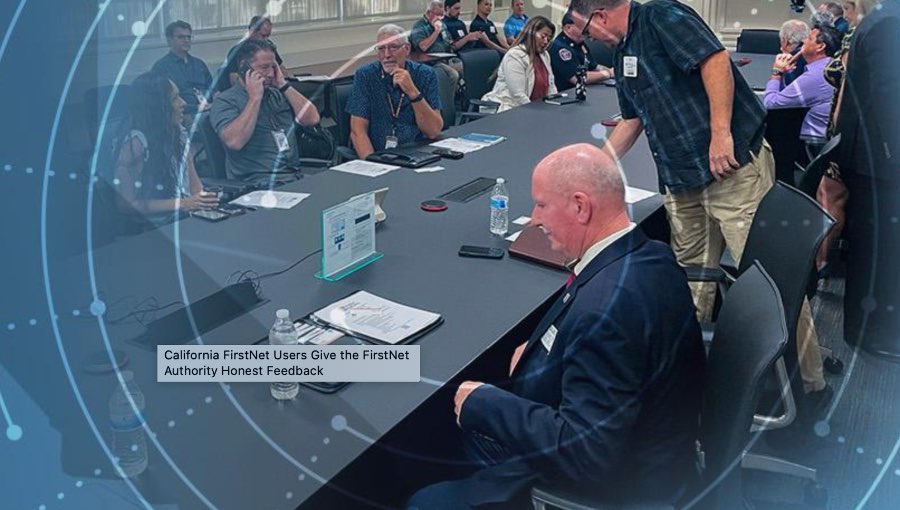
First responders have and will always be at the heart of FirstNet. For years, public safety lobbied Congress to pass legislation to establish a high-speed network designed to meet their most pressing needs. Because of their commitment to this cause, the First Responder Network Authority (FirstNet Authority) and the FirstNet network exist today.
In turn, the FirstNet Authority remains steadfast in our commitment to public safety. We work hand in hand with public safety to collect feedback on the network and their communications needs. Hearing from public safety users is critical to ensuring the network offers the right tools and services to meet their technical and operational needs. This feedback drives network investment, resources, programs, and build-out of the network.
Today, 475 communities across California rely on FirstNet. In September, the FirstNet Authority team hosted a California FirstNet User Summit in Sacramento to get feedback from some of these users. Engagement with public safety is always the backbone of our work, and user summits create opportunities for open dialogue, sharing best practices, and discussing lessons learned. They also offer an opportunity for public safety to pose questions to further their understanding of what tools and services the network has to offer.
Coverage Is King
More than 30 California-based first responders, representing state and local entities, gathered in Sacramento.
The participants agreed on the need for expanded coverage throughout California, such as in areas with challenging terrain or that have historically experienced communication issues. The demand for coverage was particularly pronounced along crucial transportation corridors and in remote areas, such as in Crescent City where its offshore geography makes coverage uniquely difficult. The consensus was clear: extended coverage would be a game changer in ensuring public safety agencies operating in rural areas have the tools they need to do their mission-critical work.
“The priority is coverage,” said one attendee. “We have responsibilities across the state and need to be able to communicate, especially as data needs continue to increase.”
Attendees also noted their agencies’ ongoing tests involving land mobile radio (LMR) and long-term evolution (LTE) connectivity. They highlighted FirstNet as a promising avenue to enhance their existing LMR systems, recognizing the potential of the nationwide network to revolutionize public safety communication.
Other top takeaways from the session included:
FirstNet Central is a resource that can provide the location of towers and coverage. Agencies on FirstNet can use their login information to access this useful information.
A fire services agency and early FirstNet adopter based in Davis, California, reported that FirstNet’s electronic patient care reporting streamlines operations by seamlessly completing and uploading reports from medical calls. It was also noted that using FirstNet Push-to-Talk LMR-to-LTE technology was significantly more cost effective per unit for the agency.
The same agency in Davis, California, reported that they use FirstNet for standby EMS coverage and to provide redundancy in command vehicles, noting that officers appreciate not having to carry around large radios.
A responder in Stockton, California, said that after transitioning the agency’s over 500 devices to FirstNet, including cameras, traffic signals, changeable message signs, and highway advisory radios, they noticed improved reliability.